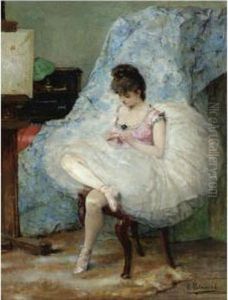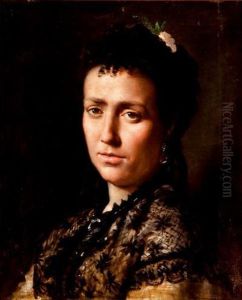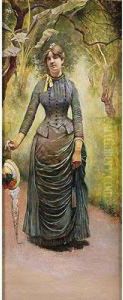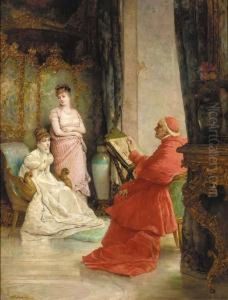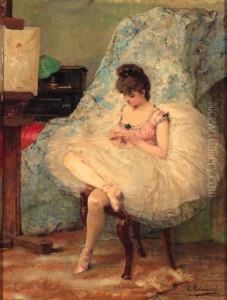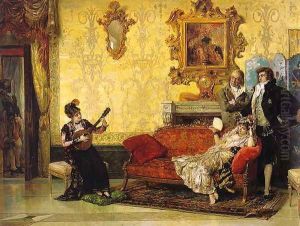Vicente Palmaroli Y Gonzalez Paintings
Vicente Palmaroli y González was a prominent 19th-century Spanish painter, known for his expertise in various genres including portraiture, genre painting, and history painting. Born on December 5, 1834, in Madrid, Spain, he was the son of an Italian lithographer, Gaetano Palmaroli, who was also his first teacher. Vicente Palmaroli showed an early interest in the arts and quickly developed his skills, later refining his artistic talents at the Real Academia de Bellas Artes de San Fernando in Madrid.
During his formative years, Palmaroli's style was influenced by the works of other Spanish masters such as Federico de Madrazo, as well as by the Romantic movement that was prevalent in Europe at the time. His initial works were often romantic and historicist in nature, reflecting the tastes of the period.
Palmaroli's career took a significant turn when he was awarded a scholarship to study in Rome. His time in Italy had a profound impact on his art, as he absorbed the classical and Renaissance influences that would later be evident in his works. Upon returning to Spain, he became a court painter and received commissions from the Spanish royalty and aristocracy. His portraits from this period were characterized by their elegance and attention to detail, earning him a reputation as a skilled portraitist.
In addition to his portraiture, Palmaroli also excelled in genre painting, capturing scenes of everyday life with a sense of intimacy and realism. His genre scenes often depicted the leisurely activities of the bourgeoisie, showcasing his ability to render textures, fabrics, and the play of light with great finesse.
Palmaroli was also involved in the revitalization of the Spanish tapestry industry during the reign of Queen Isabella II. He worked as the director of the Royal Tapestry Factory of Santa Bárbara, where he oversaw the production of tapestries based on the works of famous painters, including Goya.
Throughout his career, Palmaroli exhibited his works in numerous exhibitions and was recognized with awards and honors for his artistic contributions. His paintings can be found in various museums and private collections, where they continue to be appreciated for their technical skill and aesthetic beauty.
Vicente Palmaroli y González passed away on January 15, 1896, in Madrid. His legacy lives on as an important figure in 19th-century Spanish art, representing a bridge between the romantic sensibilities of his early years and the more realistic approaches that characterized his mature work.






